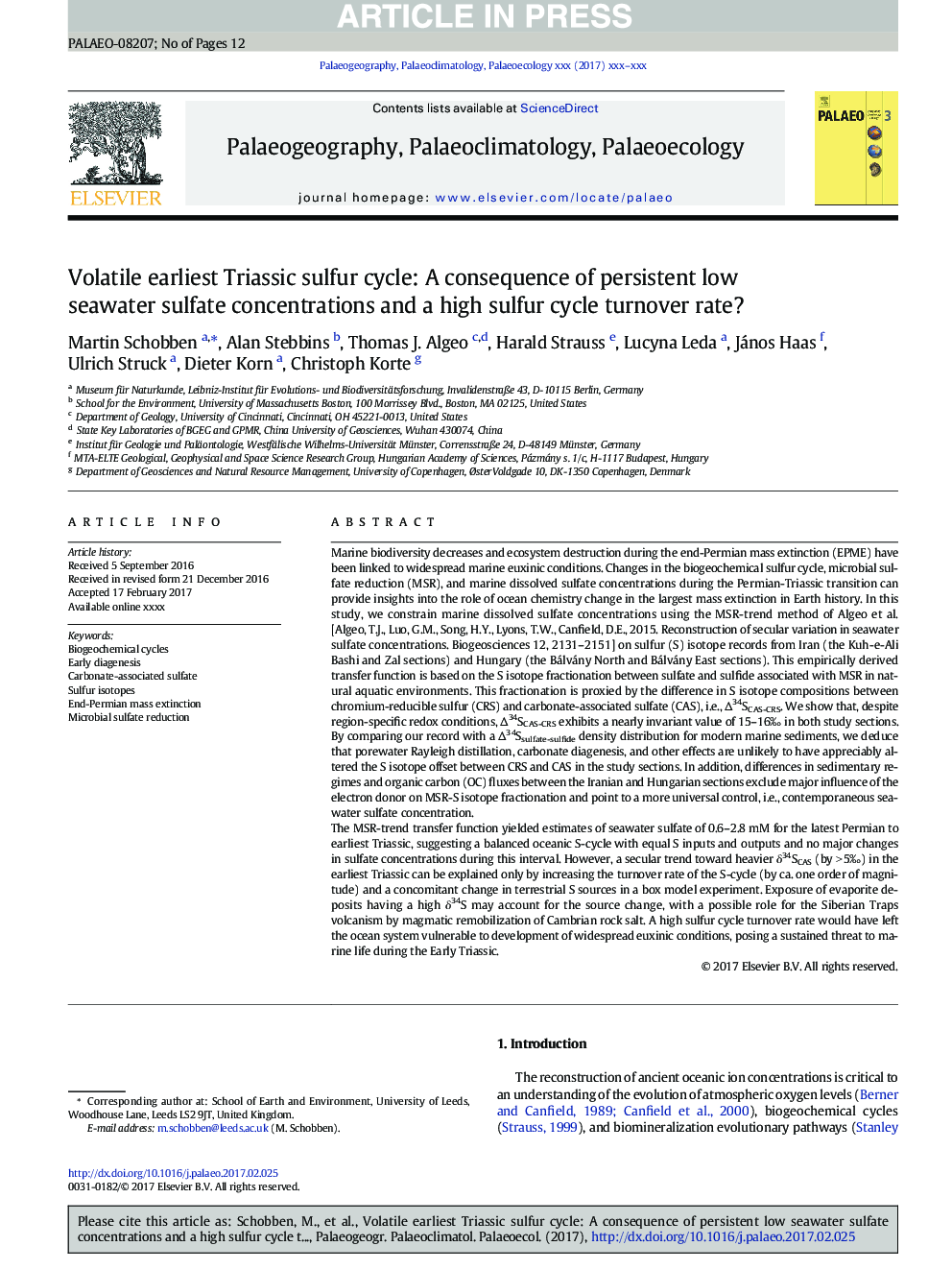| Article ID | Journal | Published Year | Pages | File Type |
|---|---|---|---|---|
| 8868615 | Palaeogeography, Palaeoclimatology, Palaeoecology | 2017 | 12 Pages |
Abstract
The MSR-trend transfer function yielded estimates of seawater sulfate of 0.6-2.8 mM for the latest Permian to earliest Triassic, suggesting a balanced oceanic S-cycle with equal S inputs and outputs and no major changes in sulfate concentrations during this interval. However, a secular trend toward heavier δ34SCAS (by > 5â°) in the earliest Triassic can be explained only by increasing the turnover rate of the S-cycle (by ca. one order of magnitude) and a concomitant change in terrestrial S sources in a box model experiment. Exposure of evaporite deposits having a high δ34S may account for the source change, with a possible role for the Siberian Traps volcanism by magmatic remobilization of Cambrian rock salt. A high sulfur cycle turnover rate would have left the ocean system vulnerable to development of widespread euxinic conditions, posing a sustained threat to marine life during the Early Triassic.
Keywords
Related Topics
Physical Sciences and Engineering
Earth and Planetary Sciences
Earth-Surface Processes
Authors
Martin Schobben, Alan Stebbins, Thomas J. Algeo, Harald Strauss, Lucyna Leda, János Haas, Ulrich Struck, Dieter Korn, Christoph Korte,
